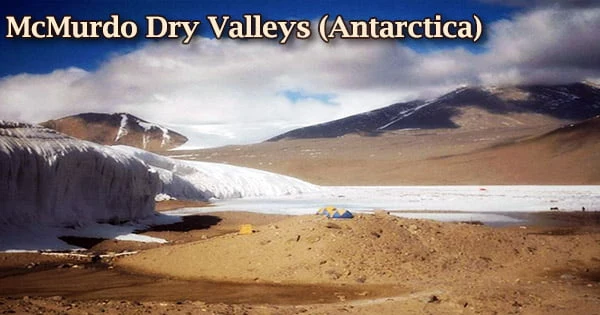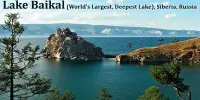The McMurdo Dry Valleys are a very unique region of Antarctica. They were created as a result of the Transantarctic Mountain Range’s positioning, which forces air flowing over them upwards, causing it to lose moisture. As a result, the valleys are in a precipitation shadow where neither snow nor rain can fall. Extremely little humidity exists in the Dry Valleys, and the surrounding mountains block the flow of ice from nearby glaciers.
This bedrock landscape is composed of granites and gneisses, with glacial tills and loose gravel covering the ground. The region is among the driest on Earth, and it hasn’t rained there in about 2 million years. The mountains also hinder the East Antarctic Ice Sheet from dumping ice into the valleys, and lastly, the ice from the glaciers that do discharge into the valleys evaporates due to strong katabatic winds of up to 320 km/h (200 mph) sweeping down from the interior and the low humidity.
The biggest area of Antarctica without ice is covered by the McMurdo Dry Valleys Antarctic Specially Managed Area (ASMA). They have one of the worst desert climates on the planet, with mean annual temperatures ranging from -14 to -30 degrees Celsius depending on the location. Windier sites are less frigid.
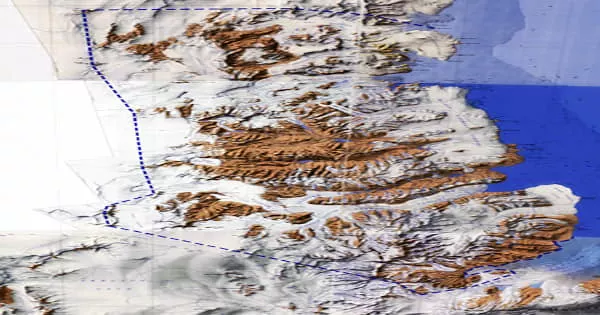
The area, which is one of the world’s most desolate deserts, has several unique characteristics, such as the Onyx River, Antarctica’s longest river and a meltwater stream called Lake Vida. The local geography explains why there is no ice in the area, which has similar temperatures to the other places that are covered in ice.
However, endolithic photosynthetic bacteria have been discovered living in the comparatively moist interior of rocks in this region of permafrost, while anaerobic bacteria with a metabolism based on iron and sulfur have been discovered living beneath the Taylor Glacier.
A McMurdo The region of Victoria Land on Antarctica’s southernmost continent is home to a group of valleys known as the Dry Valleys, which are devoid of snow. Because of its exceptionally low humidity and lack of snow or ice cover, the Dry Valleys got their name. Additionally, they remain dry because the mountains in this area are tall enough to prevent the Ross Sea from being reached by ice flowing from the East Antarctic Ice Sheet.
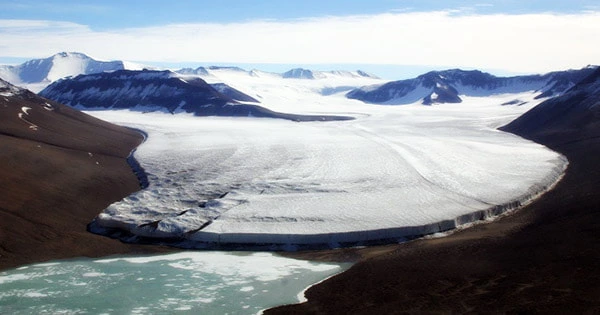
Cold desert soils that are millions of years old, unique geological features, and rare plant and microbial communities can all be found in the 15,000 km2 area. Its scenery is made up of sand dunes, watershed systems, arid patterned soils, ice-covered lakes, ice-covered mountain ranges, and ephemeral streams.
Even though they are thought of as an outlier from the typical Antarctic scenery, they lack snow because of the extremely low humidity and mountains that surround them, which stop the flow of ice from the glaciers that are close to the valleys. The valleys are the largest ice-free area in Antarctica, covering 4,800 square kilometers (1,900 square miles) or around 0.03% of the continent.
Ice wedge polygonal patterned ground can be seen in the loose gravel that covers the valley floors. Taylor Valley, Wright Valley, and Victoria Valley are the three main valleys. The katabatic winds, which happen when cold, dense air is forced downward by gravity, are a contributing factor in the peculiar weather conditions in the Dry Valleys.
Winds that can gust to 320 km/h (200 mph) can evaporate all water, ice, and snow as they descend because they heat up as they go. The snow quickly evaporates in the dry breeze, and very little of it melts into the ground. This process can be completed in a matter of hours throughout the summer.
The valleys were formed by glaciers that have receded, exposing the floor and walls, which are made of rocks that are granites and gneisses, with unsorted glacial sediment and loose gravel covering the ground. There are no permanent inhabitants, aside from the small number of wildlife that endures the harsh weather conditions.
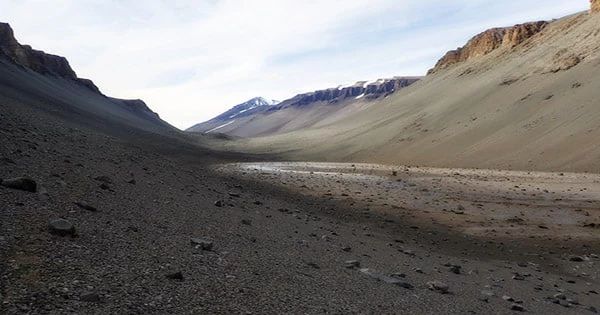
Absence of precipitation is a significant additional influence. Over a century of records, snow-only precipitation has averaged 100 millimeters (4 in) per year. The area’s low humidity is a result of this. The 1,000 to 5,000 scientists that visit the McMurdo Station are constantly eager to study them and see how they are developing because of the unique fauna, which includes anaerobic and endolithic photosynthetic bacteria that can be found in the dry valleys.
Overall, the McMurdo Dry Valleys are a special Antarctic experience that should not be missed whenever someone has the money and desire to travel to such a region. Here, one can experience the most extreme cold temperatures while feeling as though they are on Mars.
Endolithic bacteria have been discovered residing in the comparatively moist interior of rocks in the Dry Valleys, protected from the dry air. The glacier meltwater that occurs during the summer is the main source of soil nutrients. The Dry Valleys are thought to be one of the terrestrial environments that is most similar to Mars by scientists, making it a valuable resource for learning about potential extraterrestrial life. It is a place where life can be found at the very edges of the environment.

A team of researchers from Auckland University of Technology (AUT) utilized drones in the McMurdo Dry Valleys in 2014 to make baseline maps of the vegetation. The AUT team produced three-dimensional maps with sub-centimeter resolution throughout several Antarctic summers, which are now utilized as baselines.
